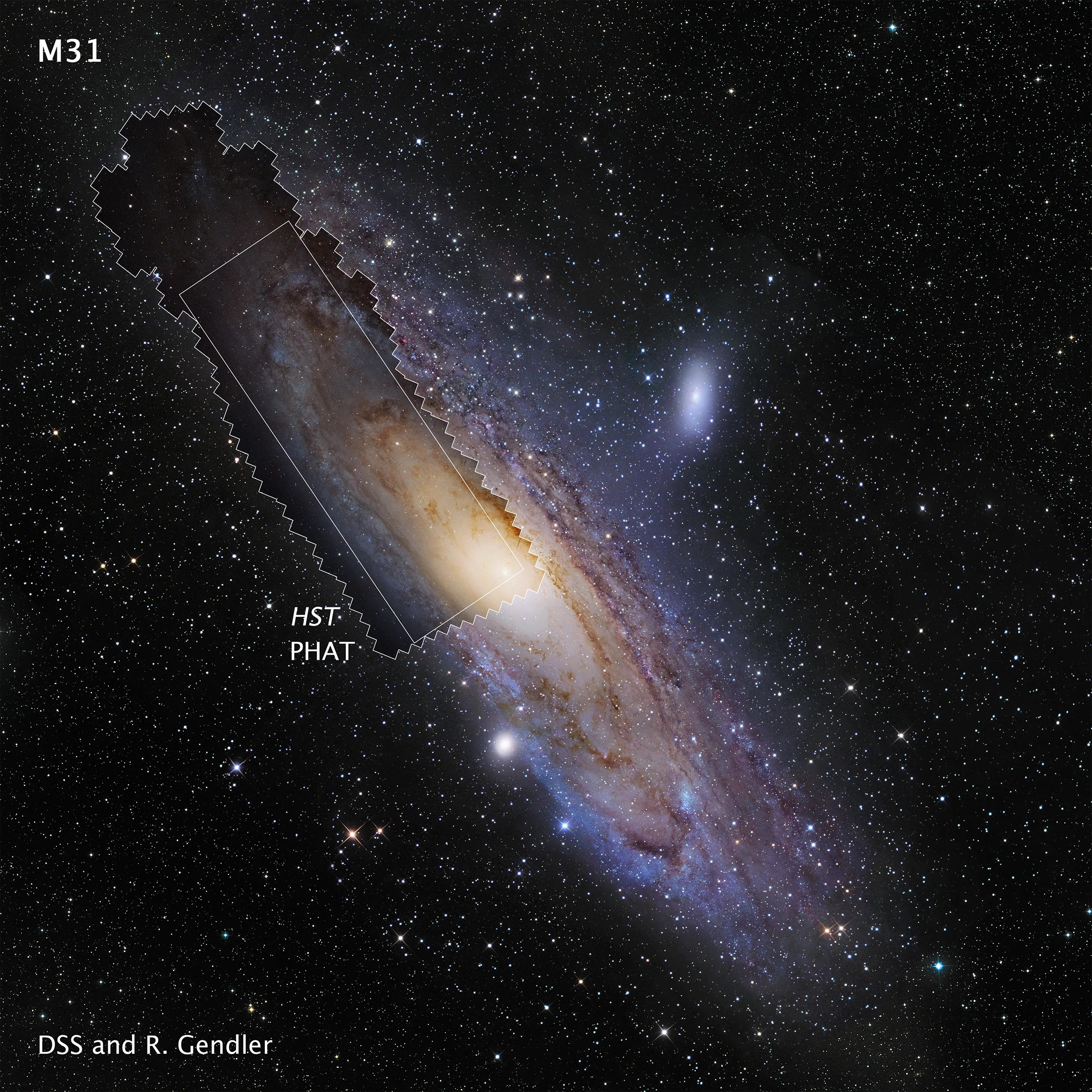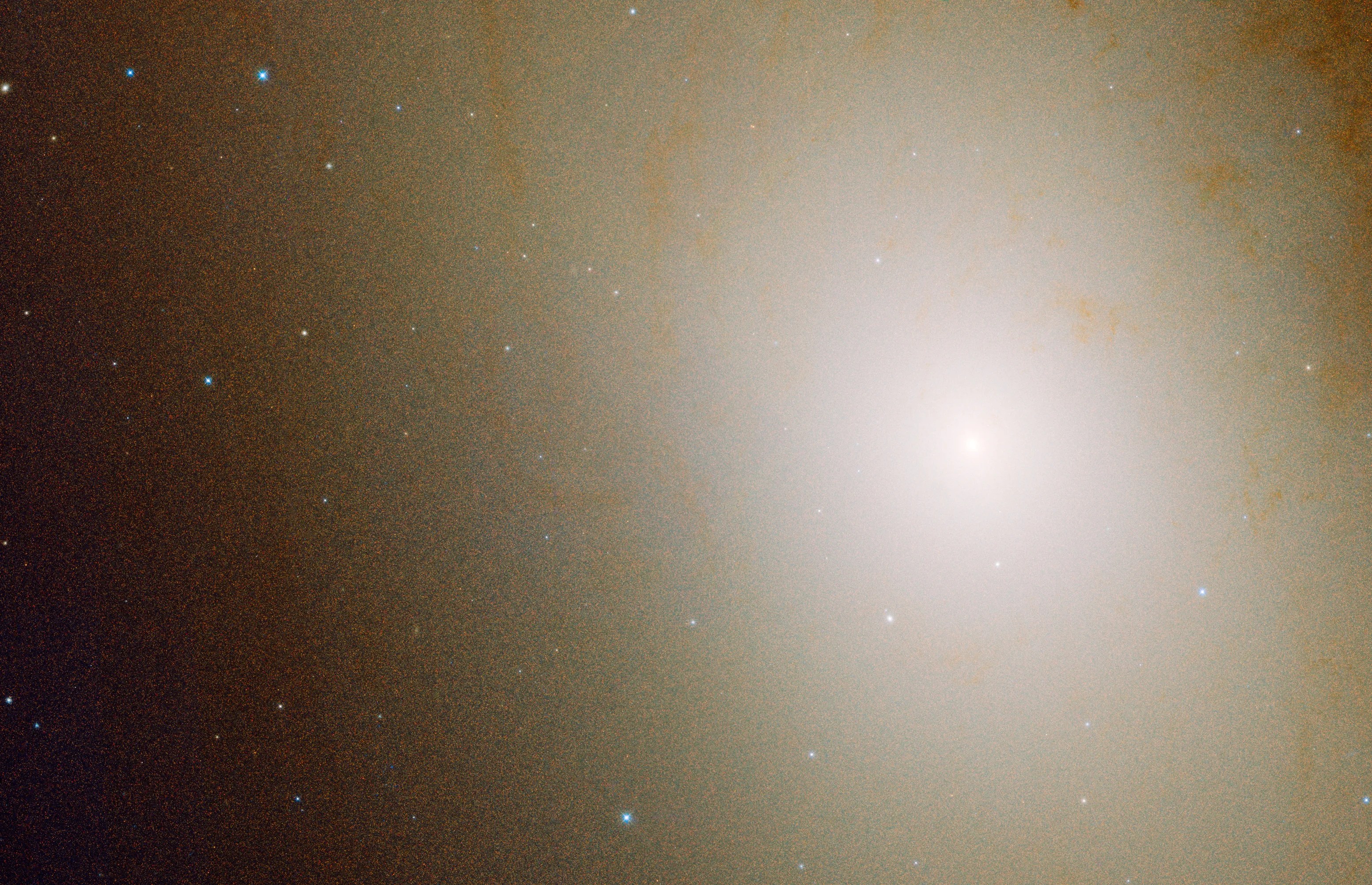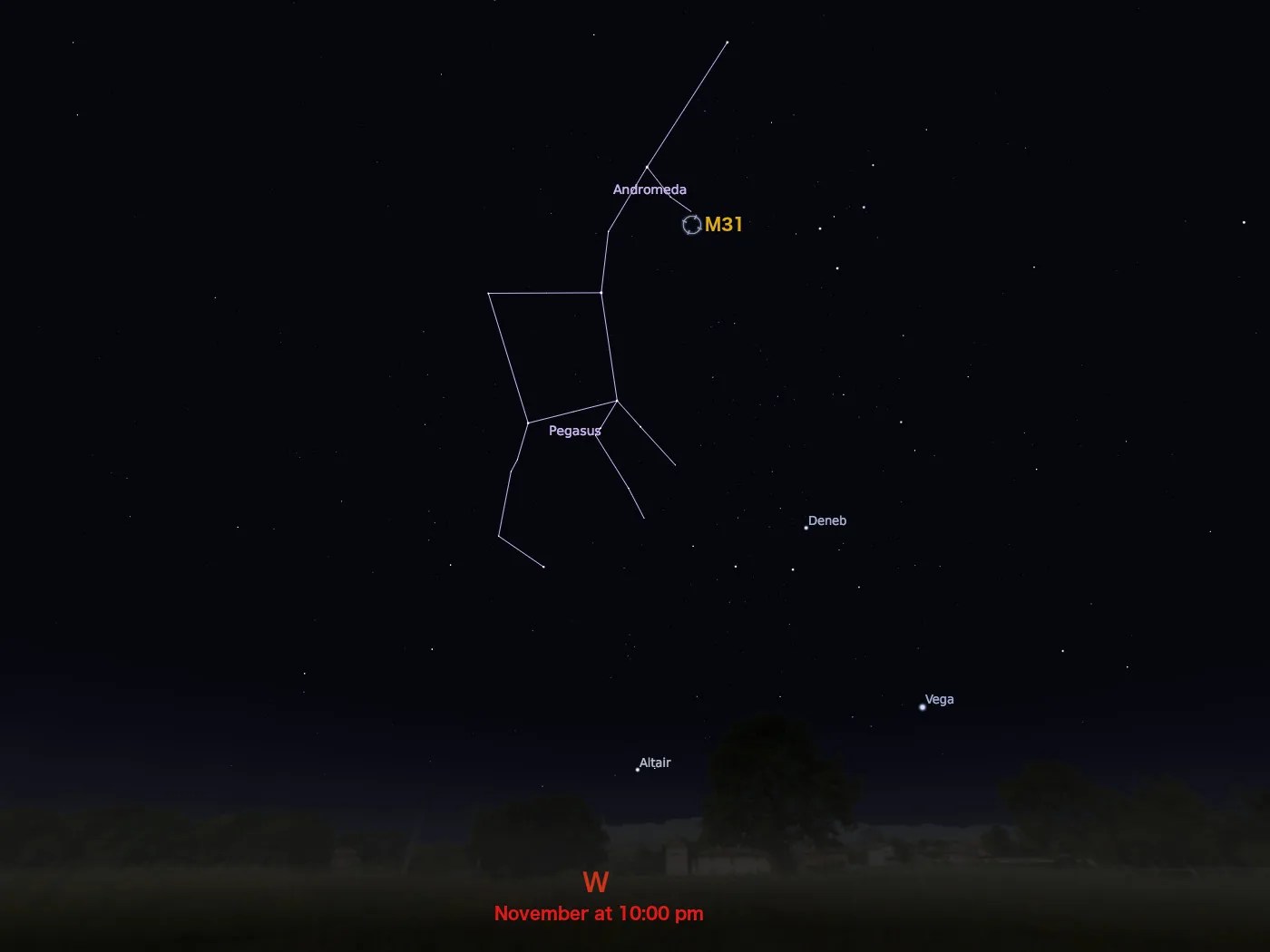Messier 31
Persian astronomer Abd al-rahman al-Sufi’s The Book of Fixed Stars from the year 964 contains the first known report of Messier 31.
Distance
2 million light-years
Apparent Magnitude
3.1
constellation
Andromeda
object type
Spiral Galaxy

Assembled from a total of 7,398 exposures taken over 411 individual pointings of the telescope, this image of our nearest major galactic neighbor, M31, is the largest Hubble mosaic to date. The 1.5 billion pixels in the mosaic reveal over 100 million stars and thousands of star clusters embedded in a section of the pancake-shaped disk of M31, also known as the Andromeda galaxy. Though the galaxy is over 2 million light-years away, Hubble is powerful enough to resolve individual stars in this 61,000-light-year-long stretch of the disk. It’s like photographing a beach and resolving individual grains of sand.


Hubble traces densely packed stars extending from the innermost hub of the galaxy, seen at left. Moving out from this central galactic bulge, the panorama sweeps across lanes of stars and dust to the sparser outer disk. Cooler, yellowish stars dominate the center of the galaxy, toward the lower left. The blue, ring-like feature that wraps from the upper left to the lower right is a spiral arm with numerous clusters of young, blue stars and star-forming regions. The dark silhouettes trace out complex dust structures.
M31 is located in the constellation Andromeda and is best observed in November. Boasting an apparent magnitude of 3.1, the galaxy can be seen with the naked eye, even in areas with moderate light pollution. Because it is such an easily observed feature in the night sky, it is impossible to say who discovered the Andromeda galaxy. However, Persian astronomer Abd al-rahman al-Sufi’s The Book of Fixed Stars from the year 964 contains the first known report of the object.
For more information on Hubble’s observations of M31, see:
- Hubble's High-Definition Panoramic View of the Andromeda Galaxy
- NASA's Hubble Shows Milky Way is Destined for Head-On Collision with Andromeda Galaxy
- Hubble Zooms in on Double Nucleus in Andromeda Galaxy
- Rare Ultra-Blue Stars Found in Neighboring Galaxy's Hub
- Hubble Views the Star that Changed the Universe
- Hubble Finds Mysterious Disk of Blue Stars Around Black Hole
- Deepest View of Space Yields Young Stars in Andromeda Halo
- Hubble Space Telescope Finds a Double Nucleus in the Andromeda Galaxy

Explore Hubble's Messier Catalog
The following pages contain some of Hubble’s best images of Messier objects.

Messier 1 (The Crab Nebula)
Better known as the Crab Nebula, Charles Messier originally mistook Messier 1 for Halley’s Comet, which inspired him to create…

Messier 2
Hubble's image of Messier 2 is comprised of visible and infrared wavelengths of light.

Messier 3
Messier 3 holds more than 500,000 stars.




